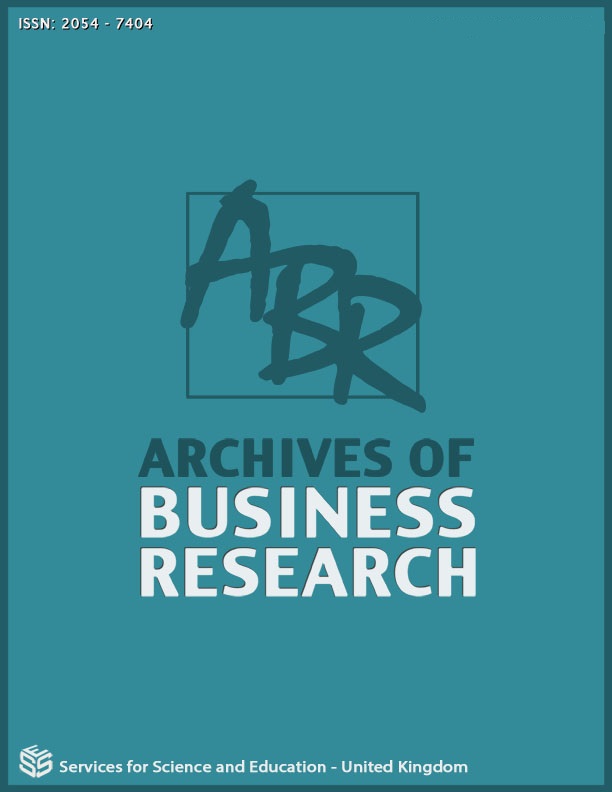Bubble Detection and the Impact of Monetary Policy, Market Sentiment and Market Liquidity on Property Stock Price Index in Indonesia
DOI:
https://doi.org/10.14738/abr.98.10603Keywords:
Bubble Stock, Exchange Rate, Interest Rate, Market Sentiment, Market Liquidity, Inflation, property stock indexAbstract
The purpose of this study is to detect the existence of a bubble stock and analyze the impact of monetary policy, market sentiment and liquidity on the property stock index in the Indonesian capital market. The data used in this study is secondary data originating from various sources for the period 2016 – 2020 using multiple linear regressions. The bubble stock detection is done by using the ratio between the property stock price index and the consumer nutrient index.
The results showed that there was an indication of a moderate bubble stock in the property stock index during the research period 2016 – 2020. The factors that impacted the property stock price index were interest rates, the rupiah exchange rate against the US dollar, market sentiment and market liquidity. The increase in interest rates, the rupiah exchange rate, and market sentiment and liquidity has an impact on the increase in the property stock price index on the Indonesian stock exchange for the 2016 – 2020 periods.
Keywords: Bubble Stock, Exchange Rate, Interest Rate, Inflation, Market Sentiment, Market Liquidity
References
. André, C., Caraiani, P., Calin, A. C., & Gupta, R. (2018). Can monetary policy lean against housing bubbles?. Department of, 281.
. Asako, Y., Funaki, Y., Ueda, K., & Uto, N. (2020). (A) symmetric information bubbles: Experimental evidence. Journal of Economic Dynamics and Control, 110, 103744.
. Bao, T., Hennequin, M., Hommes, C., & Massaro, D. (2020). Coordination on bubbles in large-group asset pricing experiments. Journal of Economic Dynamics and Control, 110, 103702
. Baker, M., & Wurgler, J. (2006). Investor sentiment and the cross‐section of stock returns. The journal of Finance, 61(4), 1645-1680.
. Berger, D., & Turtle, H. J. (2015). Sentiment bubbles. Journal of financial markets, 23, 59-74.
. Bloise, G., & Citanna, A. (2019). Asset shortages, liquidity and speculative bubbles. Journal of Economic Theory, 183, 952-990
. Branch, W. A. (2016). Imperfect knowledge, liquidity and bubbles. Journal of Economic Dynamics and Control, 62, 17-42
. Chang, X., Chen, Y., & Zolotoy, L. (2017). Stock liquidity and stock price crash risk. Journal of financial and quantitative analysis, 52(4), 1605-1637.
. Copeland, A. (2013). Seasonality, consumer heterogeneity and price indexes: the case of prepackaged software. Journal of Productivity Analysis, 39(1), 47-59.
. Cretarola, A., & Figà-Talamanca, G. (2019). Detecting bubbles in Bitcoin price dynamics via market exuberance. Annals of Operations Research, 1-21.
. Jang, J., & Kang, J. (2019). Probability of price crashes, rational speculative bubbles, and the cross-section of stock returns. Journal of Financial Economics, 132(1), 222-247.
. .Jarrow, R., & Lamichhane, S. (2021). Asset price bubbles, market liquidity, and systemic risk. Mathematics and Financial Economics, 15(1), 5-40.
. Kedar-Levy, H. (2020). Price discovery in the small and in the large: Momentum and reversal, bubbles, and crashes. Journal of Financial Markets, 48, 100505.
. Keen, S. (2013). A bubble so big we can’t even see it. real-world economics review, 64, 3-10.
. Lehnert, T. (2020). Fear and stock price bubbles. PloS one, 15(5), e0233024.
. Li, C. (2017). Log-periodic view on critical dates of the Chinese stock market bubbles. Physica A: Statistical Mechanics and its Applications, 465, 305-311.
. Li, J., Chavas, J. P., Etienne, X. L., & Li, C. (2017). Commodity price bubbles and macroeconomics: evidence from the Chinese agricultural markets. Agricultural economics, 48(6), 755-768.
. Mian, G. M., & Sankaraguruswamy, S. (2012). Investor sentiment and stock market response to earnings news. The Accounting Review, 87(4), 1357-1384.
. Miao, J., & Wang, P. (2018). Asset bubbles and credit constraints. American Economic Review, 108(9), 2590-2628.
. Miftahudin, H., (2020), https://www.medcom.id/properti/news-properti/ 8koBGalb-rei-pede-sektor-properti-tumbuh-hingga-8-di-2020
. Negrelli, S. (2020). Bubbles and persuasion with uncertainty over market sentiment. Games and Economic Behavior, 120, 67-85.
. Nneji, O. (2015). Liquidity shocks and stock bubbles. Journal of International Financial Markets, Institutions and Money, 35, 132-146
. Shah, S. Z. A., Ahmad, M., & Mahmood, F. (2018). Heuristic biases in investment decision-making and perceived market efficiency: A survey at the Pakistan stock exchange. Qualitative Research in Financial Markets.
. Sun, O., & Liu, Z. (2016). Comparison of monetary policy actions and central bank communication on tackling asset price bubbles—Evidence from China’s stock market. Plos one, 11(11), e0166526.
. Takao, K. (2019). Asset bubbles and economic growth under endogenous market structure. Macroeconomic Dynamics, 23(6), 2338-2359.
. Trebbi, F., & Xiao, K. (2019). Regulation and market liquidity. Management Science, 65(5), 1949-1968.
. Zhang, D., Liu, Z., Fan, G. Z., & Horsewood, N. (2017). Price bubbles and policy interventions in the Chinese housing market. Journal of Housing and the Built Environment, 32(1), 133-155.
Downloads
Published
How to Cite
Issue
Section
License
Copyright (c) 2021 Sunita Dasman

This work is licensed under a Creative Commons Attribution 4.0 International License.






